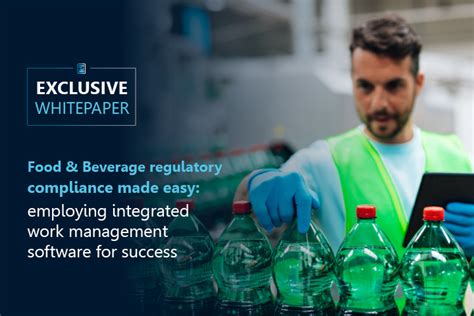A Complete Recipe for Food and Beverage Regulatory Compliance
Navigating the complex world of food and beverage regulatory compliance can feel like baking a soufflé – one wrong move and the whole thing can collapse. But with the right ingredients and careful execution, you can create a successful and compliant operation. This guide will provide a comprehensive recipe for ensuring your food and beverage business is legally sound and safe for consumers.
Ingredient 1: Understanding Your Target Market & Regulations
Before you even start mixing, you need to know your recipe. This means identifying your target market (local, national, international) and the specific regulations that govern it. These differ vastly depending on your location and the type of food and beverage you produce. Key regulatory bodies to familiarize yourself with include:
- The Food and Drug Administration (FDA) (USA): If you're operating in the United States, the FDA is your primary regulatory authority. They oversee food safety, labeling, and advertising.
- The European Food Safety Authority (EFSA) (Europe): The EFSA is the equivalent for Europe, setting standards for food safety and labeling across the EU.
- Equivalent National Agencies: Every country has its own regulatory body, so research the specific agency responsible for food and beverage safety in your area.
Specific Regulations You Need to Know:
- Food Safety Modernization Act (FSMA) (USA): This landmark legislation focuses on preventing food safety problems rather than reacting to them.
- Good Manufacturing Practices (GMP): These guidelines detail the processes and procedures required to produce safe and high-quality food.
- Hazard Analysis and Critical Control Points (HACCP): HACCP is a systematic approach to food safety that identifies and controls potential hazards.
- Labeling Requirements: Accurate and truthful labeling is crucial, including nutritional information, allergen statements, and ingredient lists. This varies greatly by region.
Ingredient 2: Implementing Robust Food Safety Systems
This is where the real baking begins. You need to establish comprehensive food safety management systems, including:
- HACCP Plan: Develop a detailed HACCP plan that identifies potential hazards at every stage of production, from sourcing ingredients to packaging and distribution.
- Supplier Management: Establish relationships with reputable suppliers who meet your safety standards. Regular auditing is key.
- Employee Training: Train all employees on proper food handling, hygiene, and safety protocols. Regular refresher training is vital.
- Record Keeping: Meticulous record keeping is essential to demonstrate compliance. This includes production records, supplier documentation, and employee training records.
- Recall Plan: Have a well-defined recall plan in place to quickly and effectively remove contaminated products from the market.
Ingredient 3: Maintaining Compliance & Continuous Improvement
Your work isn’t finished once your food safety systems are in place. Ongoing monitoring and continuous improvement are crucial:
- Regular Audits: Conduct regular internal audits to assess compliance with regulations and identify areas for improvement.
- External Audits: Schedule periodic audits by third-party organizations to ensure independence and credibility.
- Staying Updated: Food safety regulations are constantly evolving, so stay informed about changes and updates. Subscribe to relevant newsletters and attend industry events.
- Documentation Review: Regularly review your documentation to ensure accuracy and completeness.
The Finished Product: A Compliant and Successful Business
By following this recipe, your food and beverage business will be well-positioned for success. Regulatory compliance isn't just about avoiding penalties; it's about building consumer trust, protecting your brand reputation, and ensuring the safety of your products. Remember, a little extra attention to detail can prevent significant problems down the line. A successful food and beverage business is built on a foundation of safety and compliance.
